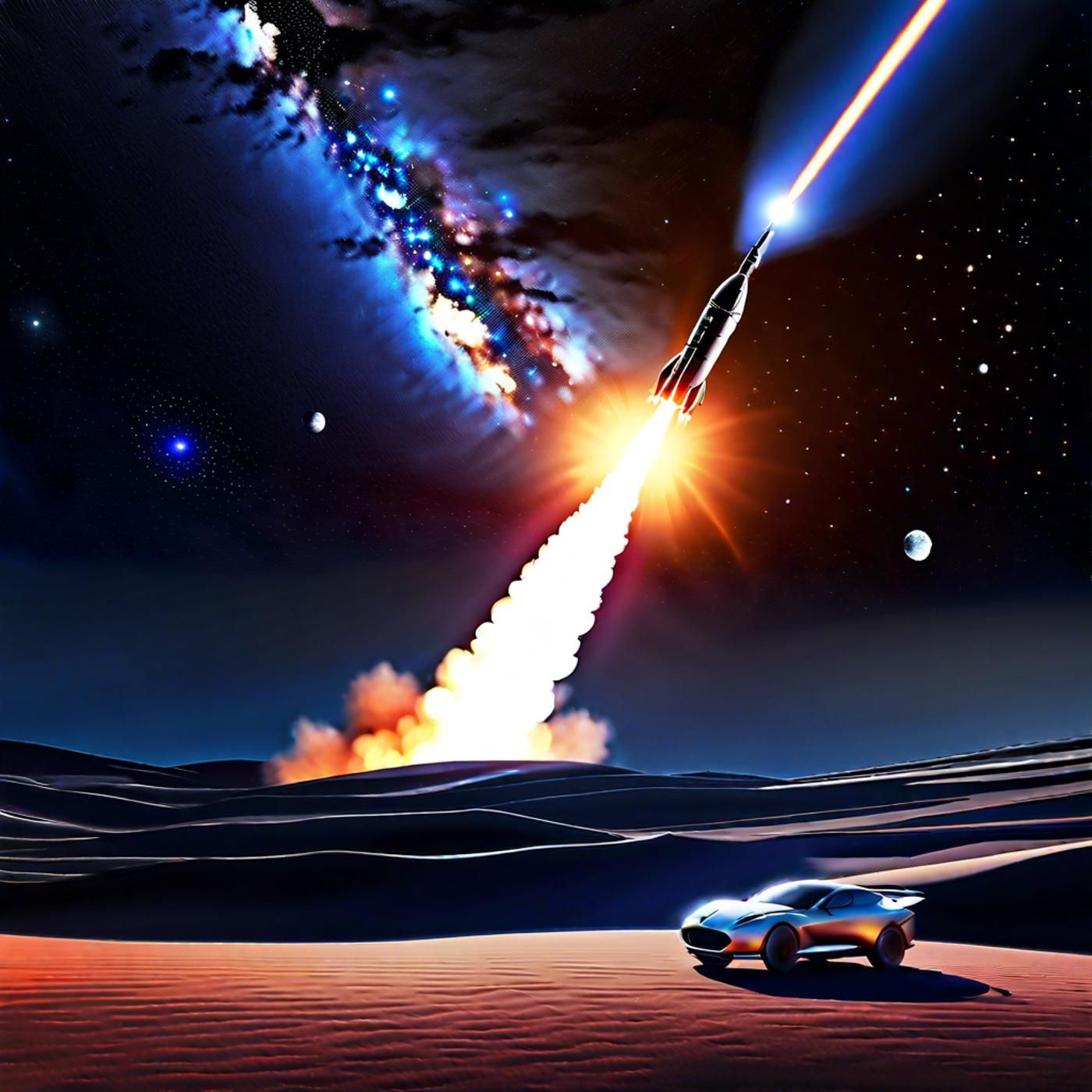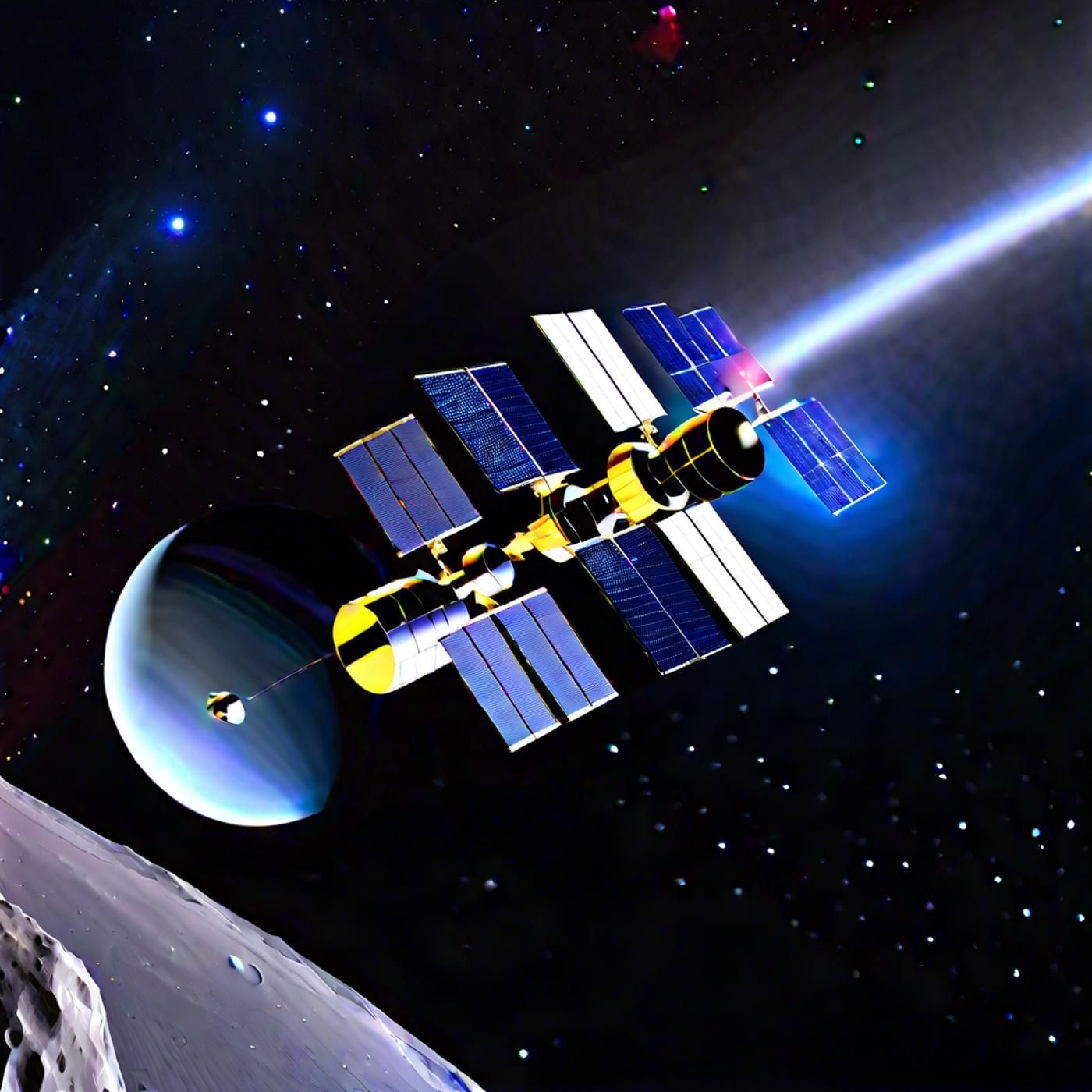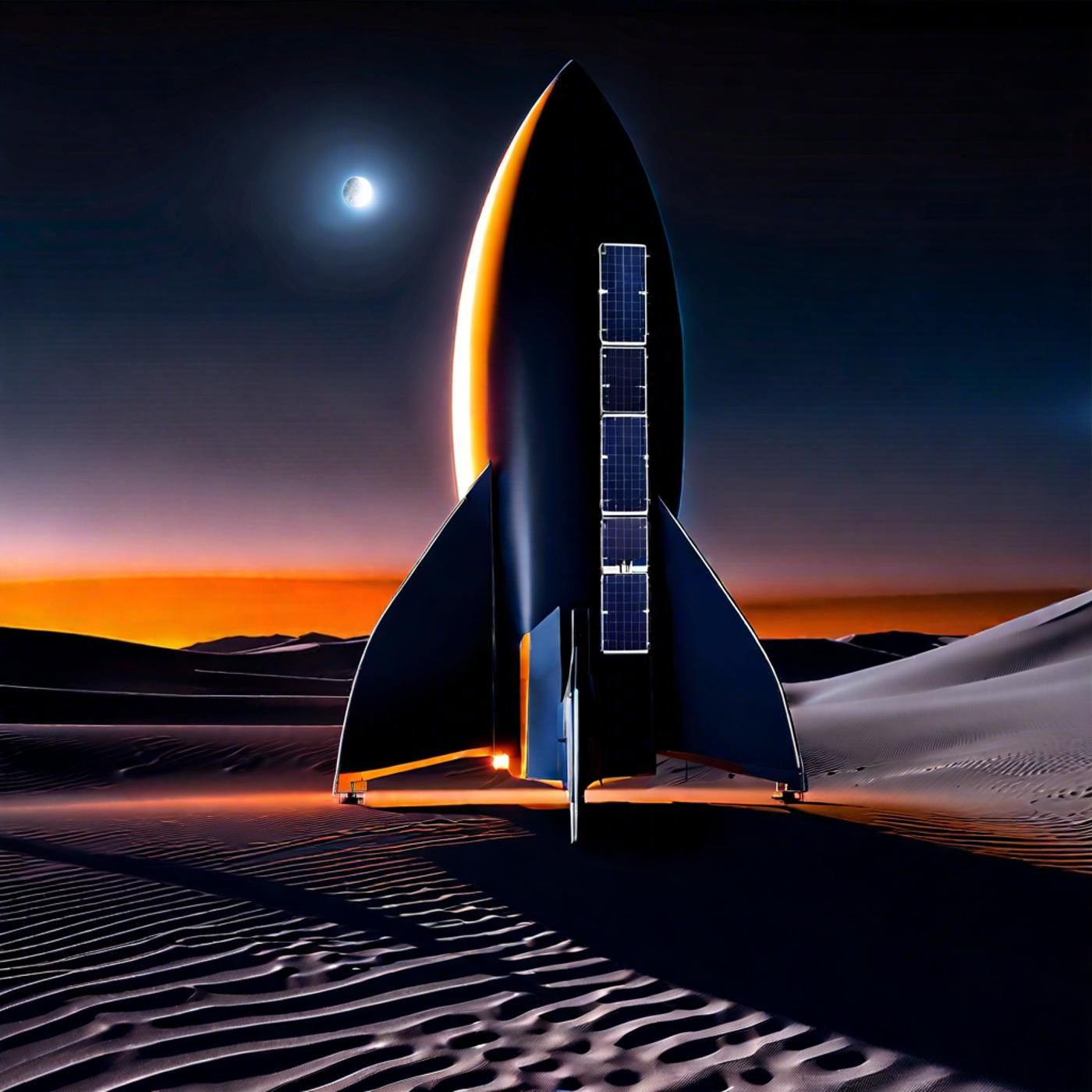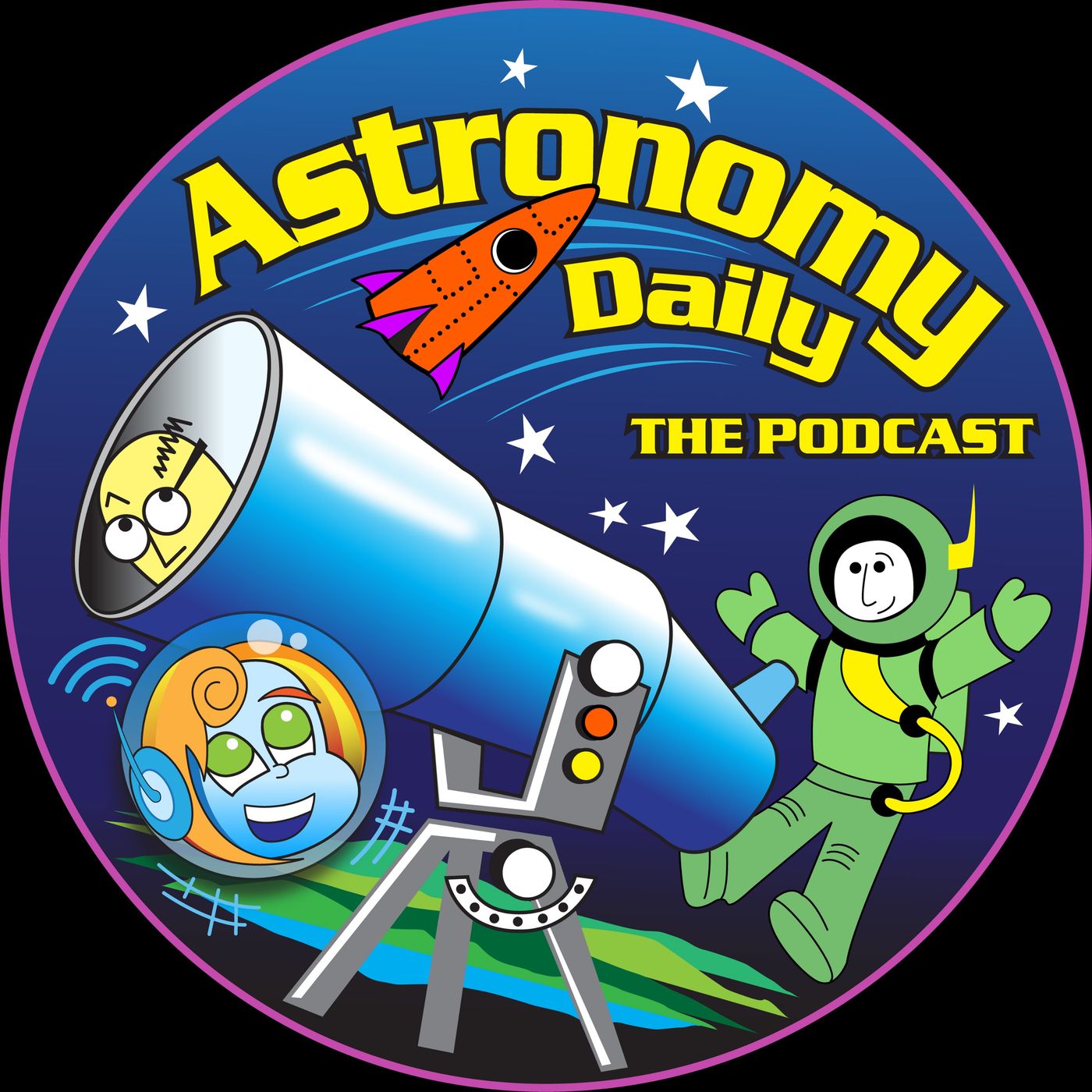S03E79: SpaceX's Starlink Milestone & Hubble's Stunning Revival

Embark on a celestial journey with today's episode of Astronomy Daily - The Podcast, where your host, Anna, brings you the latest cosmic updates. We'll dive into the successful launch of SpaceX's Starlink satellites, incredible new images from the...
Embark on a celestial journey with today's episode of Astronomy Daily - The Podcast, where your host, Anna, brings you the latest cosmic updates. We'll dive into the successful launch of SpaceX's Starlink satellites, incredible new images from the Hubble Space Telescope, and the real-time awakening of a massive black hole. We'll explore how Earth's atmosphere protects us from the devastating effects of nearby supernovae and look at a fascinating collaboration between Lego and space agencies to celebrate upcoming lunar missions. Stay tuned for an engaging and insightful episode as we dive into some of the most intriguing stories this week.On June 18, SpaceX successfully launched another batch of its Starlink broadband satellites from California, marking the 61st orbital liftoff of the year for the company. A Falcon 9 rocket carrying 20 satellites lifted off from Vandenberg Space Force Base at 11:40 p.m. EDT. This launch included 13 satellites with direct-to-cell capabilities, making them even more adaptable for broadband communication. Eight and a half minutes after launch, the Falcon 9's first stage made a pinpoint landing on the drone ship "Of Course I Still Love You" stationed in the Pacific Ocean. This was the fifth flight and landing for this particular booster, highlighting SpaceX's commitment to reusability and cost efficiency in space travel. The rocket's upper stage continued its journey to deploy the 20 satellites into low Earth orbit, adding to the ever-growing Starlink mega constellation, which now boasts over 6000 operational satellites.NASA's Hubble Space Telescope has successfully captured its first new images since switching to a single gyro operational mode. Despite issues with one of Hubble's gyroscopes, the transition to single gyro mode has proven effective, allowing Hubble to resume its vital scientific missions. One of the standout achievements in Hubble's new operational mode is a stunning image of the galaxy NGC 1546, located in the constellation Dorado. This image is part of a collaborative observing program involving both Hubble and NASA's James Webb Space Telescope. The program also employs data from the Atacama Large Millimeter/submillimeter Array, providing scientists with a comprehensive and detailed view of stellar formation and evolution.NASA has announced that Boeing's Starliner capsule will remain docked at the International Space Station for an additional four days, postponing its return to Earth until June 26. The extension will provide valuable time to gather more comprehensive data from this 20-day test flight, which is the first to carry astronauts aboard the Starliner. This delay comes as a precautionary measure to address ongoing technical challenges. The Starliner has experienced five known helium leaks in its propulsion system and has faced unexpected issues with numerous maneuvering jets. Engineers have determined that the spacecraft still has ample helium reserves to ensure a safe trip back to Earth. Meanwhile, astronauts Barry "Butch" Wilmore and Sunita Williams will use the extra time to contribute to ISS operations, aiding with experiments and maintenance tasks.In an extraordinary breakthrough, astronomers have reportedly documented what might be the first real-time observation of a massive black hole awakening. The galaxy SDSS J1335+0728, which appeared unremarkable in years past, began to shine brighter than ever starting in late 2019. Scientists tracking this phenomenon use data from multiple space and ground-based observatories, concluding that the significant behavioral changes are likely due to the sudden activation of the galaxy's central black hole. This groundbreaking observation could offer new insights into the mechanisms and behaviors inherent to galactic cores.New research confirms that Earth's atmosphere, especially the ozone layer, plays a critical role in protecting life from the harmful effects of nearby supernovae. The ozone layer, along with the magnetosphere, acts as a formidable shield against the intense UV radiation and cosmic rays that accompany these massive stellar explosions. A study published in Nature Communications Earth and Environment reveals that even a nearby supernova explosion within 100 parsecs, or 326 light-years, would not significantly harm Earth's biosphere. This resilience underscores the robust nature of Earth's defenses, allowing its biosphere to thrive even amidst galactic phenomena.LEGO, in partnership with ESA and NASA, is celebrating the Artemis program by releasing special space-themed bricks. This collaboration aims to inspire the next generation of space enthusiasts and commemorate the upcoming missions to the moon. The Artemis program's goal is to return humans to the lunar surface for the first time in over 50 years. These unique LEGO sets will not only capture the imagination of children and adults alike but also help raise awareness and excitement for future space exploration endeavors.
For an astronomical experience, visit our website at astronomydaily.io for the latest news, sign up for our free newsletter, and check out exclusive sponsor deals. Connect with us on YouTube, TikTok, X, and Facebook via @AstroDailyPod for engaging discussions with fellow space aficionados. This is Anna, reminding you to keep your gaze fixed on the heavens. Until our next stellar episode, let the cosmos ignite your curiosity and wonder. Clear skies and cosmic discoveries to all!
Support:
This podcast is better with your support:
https://www.bitesz.com/show/astronomy-daily-the-podcast/support/
www.bitesz.com
Sponsors:
www.bitesz.com/nordpass
https://www.bitesz.com/show/astronomy-daily-the-podcast/sponsors/
Welcome to Astronomy Daily, the podcast that brings you the latest news and discoveries in the world of astronomy and space exploration. I'm your host, Anna. Today, we have an exciting line-up of stories that will keep you captivated and informed. From a successful launch by SpaceX to incredible new images from the Hubble Space Telescope, and even the real-time awakening of a massive black hole. We’ll explore how Earth’s atmosphere protects us from the devastating effects of nearby supernovae, and look at a fascinating collaboration between LEGO and space agencies to celebrate upcoming lunar missions. Stay tuned for an engaging and insightful episode as we dive into some of the most intriguing stories this week.
On June 18, SpaceX successfully launched another batch of its Starlink broadband satellites from California, marking the 61st orbital liftoff of the year for the company. A Falcon 9 rocket, carrying 20 satellites, lifted off from Vandenberg Space Force Base at 11:40 p.m. EDT. This launch included 13 satellites with direct-to-cell capabilities, making them even more adaptable for broadband communication. Eight and a half minutes after launch, the Falcon 9's first stage made a pinpoint landing on the droneship "Of Course I Still Love You," stationed in the Pacific Ocean. This was the fifth flight and landing for this particular booster, highlighting SpaceX's commitment to reusability and cost efficiency in space travel. The rocket’s upper stage continued its journey to deploy the 20 satellites into low Earth orbit, adding to the ever-growing Starlink megaconstellation, which now boasts over 6,000 operational satellites. Tuesday night’s mission came after a brief 10-day spaceflight lull for SpaceX, showcasing their impressive pace of nearly one launch every 2.8 days this year alone. This launch was originally intended to follow the Astra 1P telecom satellite launch, which was delayed due to high winds, further demonstrating the company’s ability to adapt and overcome environmental challenges.
NASA's Hubble Space Telescope has successfully captured its first new images since switching to a single gyro operational mode. The switch was necessitated by issues with one of Hubble’s gyroscopes, which help control and orient the telescope. Despite this technical challenge, the transition to single gyro mode has proven effective, allowing Hubble to resume its vital scientific missions. One of the standout achievements in Hubble's new operational mode is a stunning image of the galaxy NGC 1546, located in the constellation Dorado. This nearby galaxy gives us an exceptional view of its intricate dust lanes and a luminous core. The core's yellowish glow reveals an older population of stars, while bright blue regions around it indicate active star formation. Captured by Hubble's Wide Field Camera 3, this image is part of a collaborative observing program involving both Hubble and NASA’s James Webb Space Telescope. The program also employs data from the Atacama Large Millimeter/submillimeter Array, providing scientists with a comprehensive and detailed view of stellar formation and evolution.
Dr. Jennifer Wiseman, senior project scientist for Hubble at NASA’s Goddard Space Flight Center, stated that this image demonstrates Hubble's continued success and stability in its new operational mode. The telescope, which has been observing the universe for over three decades, is poised to continue delivering groundbreaking astronomical discoveries for many years to come.
NASA has announced that Boeing’s Starliner capsule will remain docked at the International Space Station for an additional four days, postponing its return to Earth until June 26. The extension will provide valuable time to gather more comprehensive data from this 20-day test flight, which is the first to carry astronauts aboard the Starliner. This delay comes as a precautionary measure to address ongoing technical challenges. The Starliner has experienced five known helium leaks in its propulsion system and has faced unexpected issues with numerous maneuvering jets. Although one of these jets will remain offline for the rest of the mission, a successful hot-fire test has restored confidence in the remaining thrusters’ functionality for critical post-undocking maneuvers and the eventual re-entry. Engineers have determined that the spacecraft still has more than ample helium reserves to ensure a safe trip back to Earth. Meanwhile, the additional docked period will allow for extended scrutiny of telemetry and the performance of systems under real-time conditions.
As mission managers continue to work through these final assessments, astronauts Barry “Butch” Wilmore and Sunita Williams will use the extra time to contribute to the ISS operations, aiding with experiments and maintenance tasks. This includes supporting a critical spacewalk scheduled just before their departure, aimed at retrieving a faulty radio transmitter and conducting microbial checks outside the station’s airlock. Despite the setbacks, NASA and Boeing are optimistic that these extra days will yield invaluable data that will help iron out any outstanding issues. This extended observation period will also contribute to the objective of certifying the Starliner for operational crew rotation missions by early next year. The focus remains on ensuring the highest standards of safety and reliability before it can fully join the fleet of spacecraft facilitating human exploration of space.
In an extraordinary breakthrough, astronomers have reportedly documented what might be the first real-time observation of a massive black hole awakening. The galaxy SDSS1335+0728, which appeared unremarkable in years past, began to shine brighter than ever starting in late 2019. This rapid and unprecedented brightening across various wavelengths has grabbed the attention of the scientific community. Scientists tracking this phenomenon used data from multiple space and ground-based observatories, including the European Southern Observatory’s Very Large Telescope. They conclude that the significant behavioral changes observed are likely due to the sudden activation of the galaxy’s central black hole, transforming it into an 'active galactic nucleus.' This groundbreaking observation could offer new insights into the mechanisms and behaviors inherent to galactic cores. The continuous brightening since 2019, and the onset of X-ray emissions this year, make SDSS1335+0728 an invaluable subject for studying the life cycles and feeding habits of massive black holes. This unique real-time documentation opens up exciting possibilities for future astronomical research.
New research confirms that Earth’s atmosphere, especially the ozone layer, plays a critical role in protecting life from the harmful effects of nearby supernovae. The ozone layer, along with the magnetosphere, acts as a formidable shield against the intense UV radiation and cosmic rays that accompany these massive stellar explosions. A study published in Nature Communications Earth and Environment reveals that even a nearby supernova explosion, within 100 parsecs or 326 light-years, would not significantly harm Earth's biosphere. The researchers used advanced atmospheric models to simulate the impact of such an event and found that our protective layers would prevent the most damaging effects. While there might be some depletion of the ozone layer, the levels would remain comparably manageable and not lead to significant biological impacts. This resilience underscores the robust nature of Earth's defenses, allowing its biosphere to thrive even amidst galactic phenomena. The findings are reassuring, highlighting that our planet is well-equipped to handle the cosmic challenges posed by nearby supernovae.
LEGO, in partnership with ESA and NASA, is celebrating the Artemis program by releasing special space-themed bricks. This collaboration aims to inspire the next generation of space enthusiasts and commemorate the upcoming missions to the moon. The Artemis program's goal is to return humans to the lunar surface for the first time in over 50 years, with the Gateway lunar orbit platform playing a pivotal role. These unique LEGO sets will not only capture the imagination of children and adults alike but also help raise awareness and excitement for future space exploration endeavors.
Thank you for tuning into this episode of Astronomy Daily. Be sure to visit our website at astronomydaily.io for more news and stories. Don’t forget to check out our sponsors and leave us a review or comment. Your feedback is invaluable to us. Until next time, this is Anna saying bye bye, - and keep looking up. You never know what you might see!
New to Astronomy Daily - The Podcast?
Here are some great episodes to start with.




















